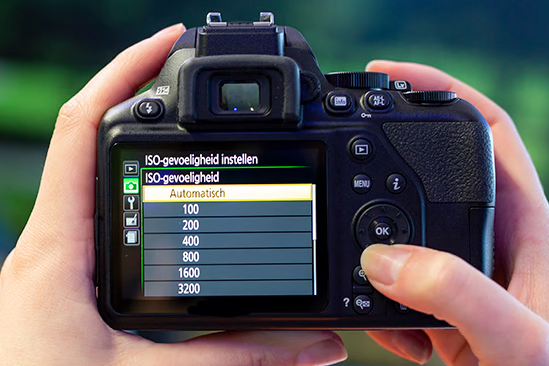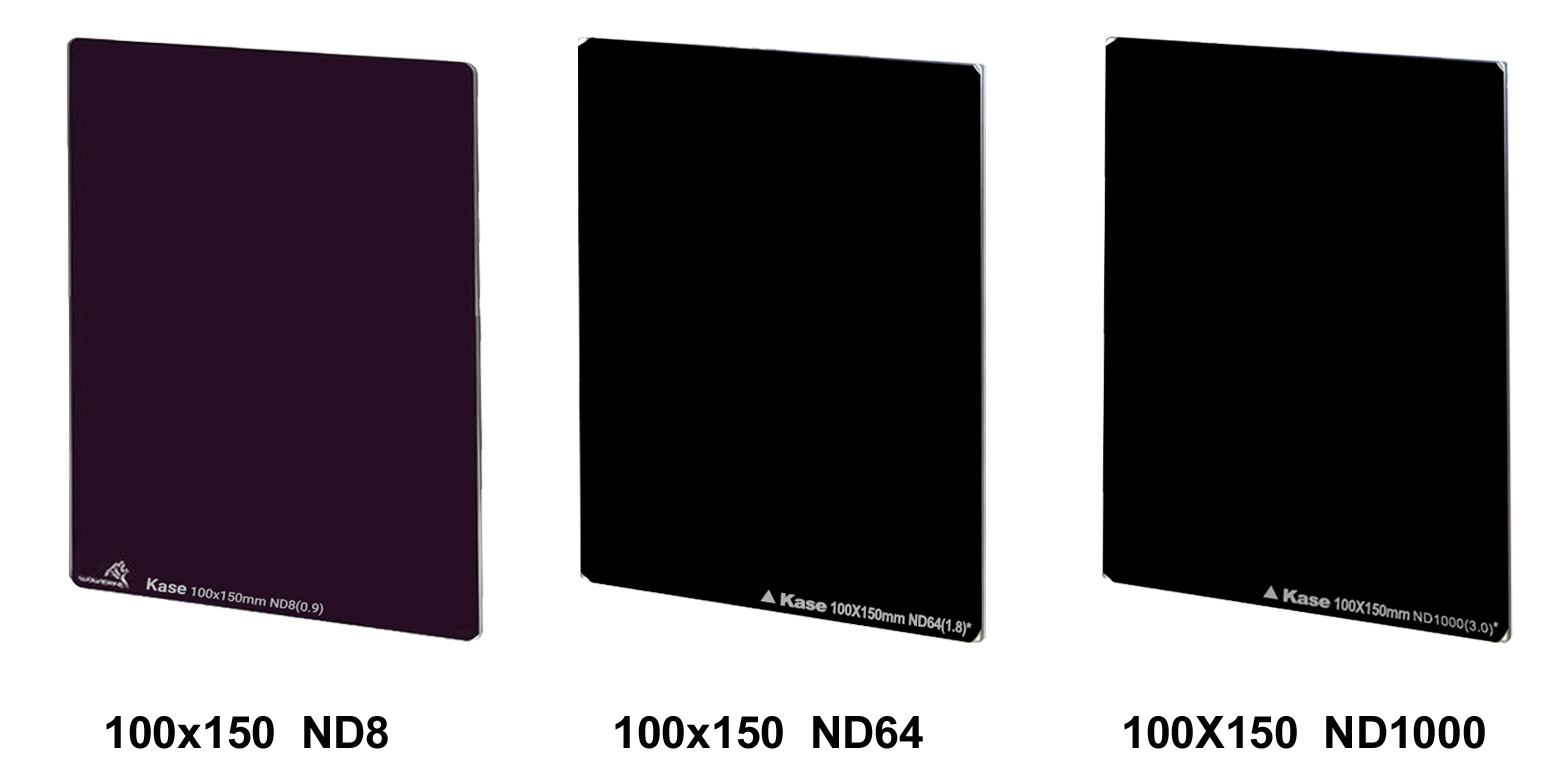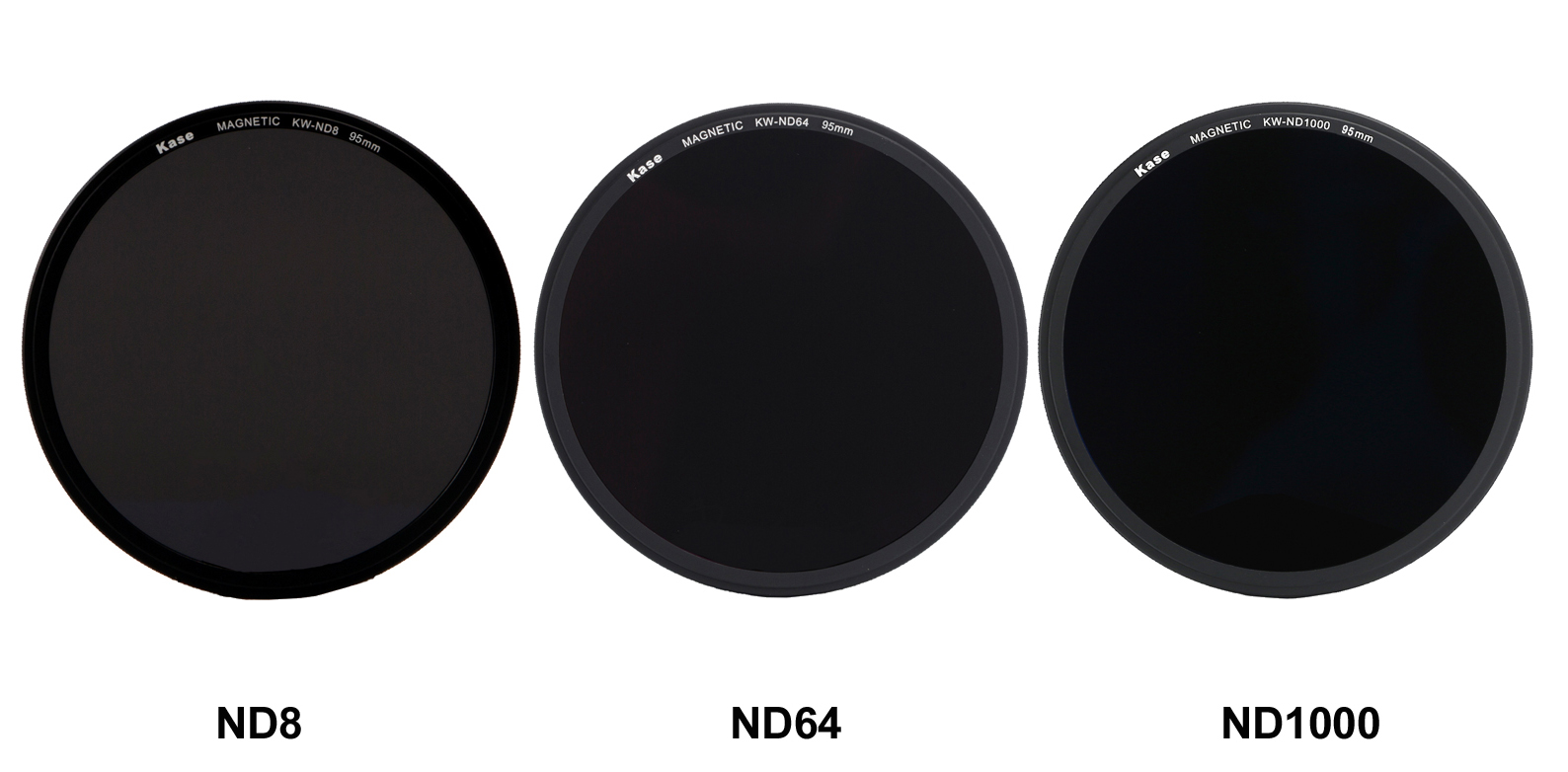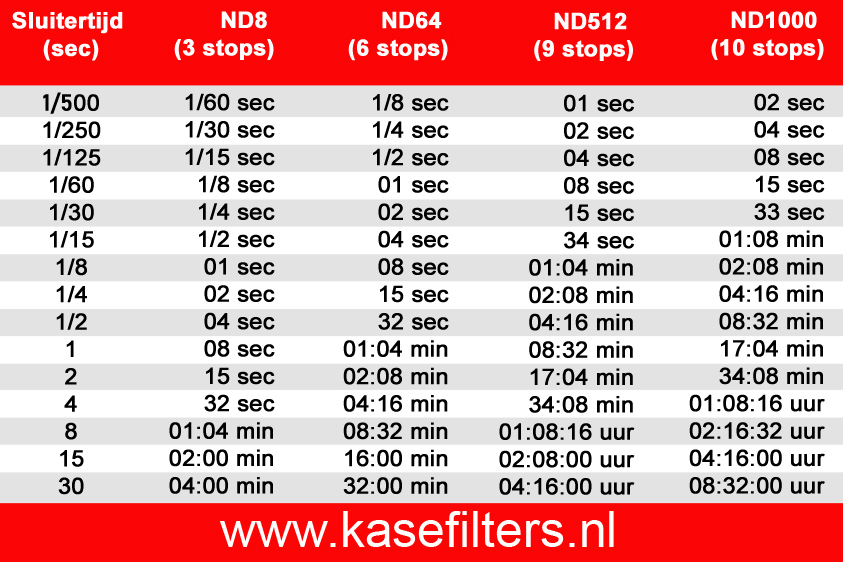There are no products in your shopping cart yet.
ND Filters and Stops
In this blog we explain everything about ND filters, also called Gray filters, and what Stops are.
Many novice photographers who start photographing landscapes have sometimes thought, how do they take those photos? And then the use of a neutral density filter comes with the solution. Before then, let's brush up on the basics of photography, based on the 3 main settings on your camera, because manual settings are the basics.
Aperture, ISO value and Shutter speed, the so-called exposure triangle.
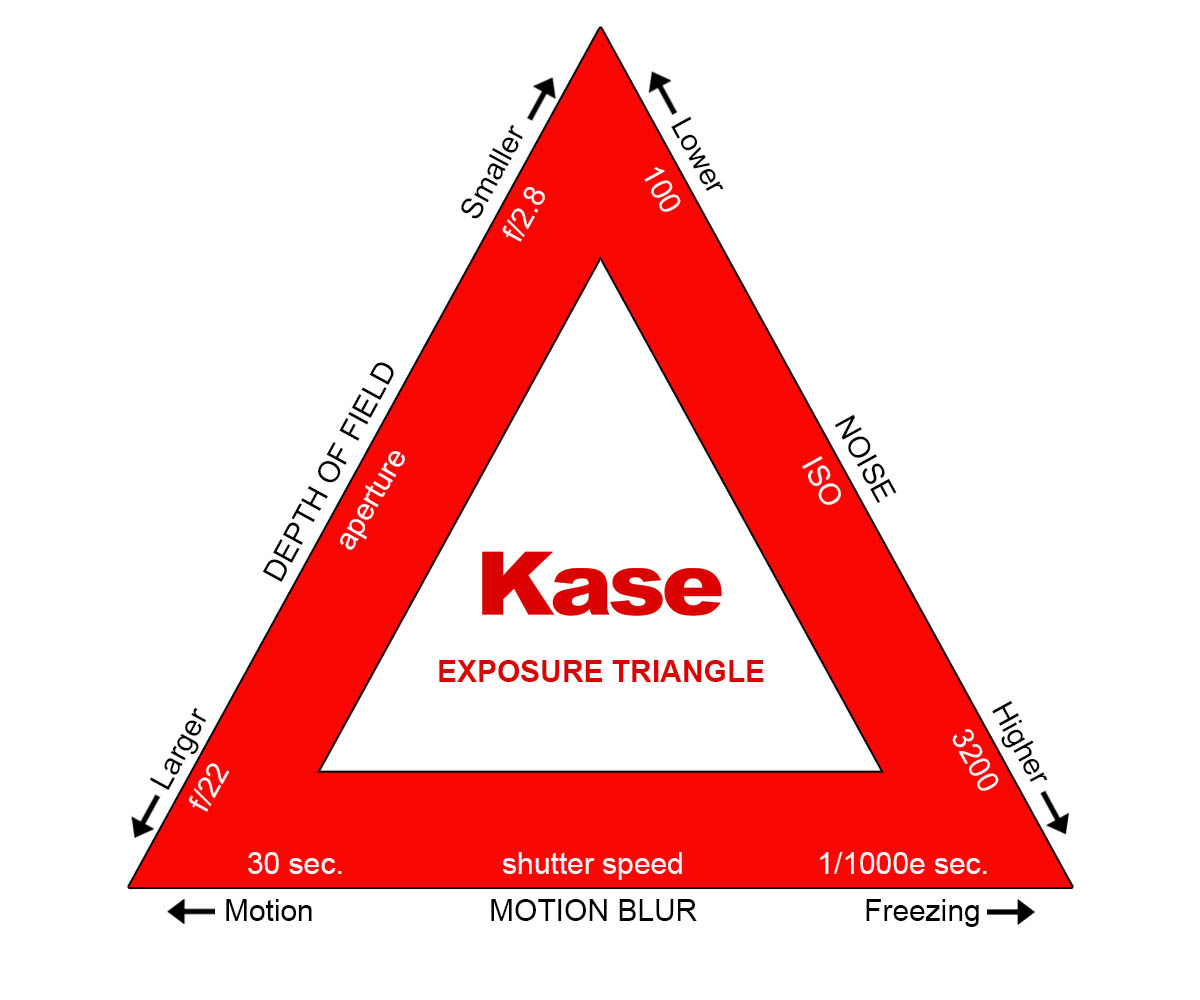
Aperture values
The aperture is the adjustable opening in your lens, which determines the amount of light that falls on your camera's sensor and also how large the area of focus is.
With a large aperture f/2.8, you have a small depth of field. With a small aperture f/22, you have a large depth of field.
With a large aperture f/2.8, you have a small depth of field. With a small aperture f/22, you have a large depth of field.
The apertures are: f/1 ; f/1.4 ; f/2 ; f/2.8 ; f/4 ; f/5.6 ; f/8 ; f/11 ; f/16 ; f/22 ; f/32 ; f/45 ; f/64.
Each step is 1 stop and that is important to know to determine how many stops you go up or down.
Each step is 1 stop and that is important to know to determine how many stops you go up or down.
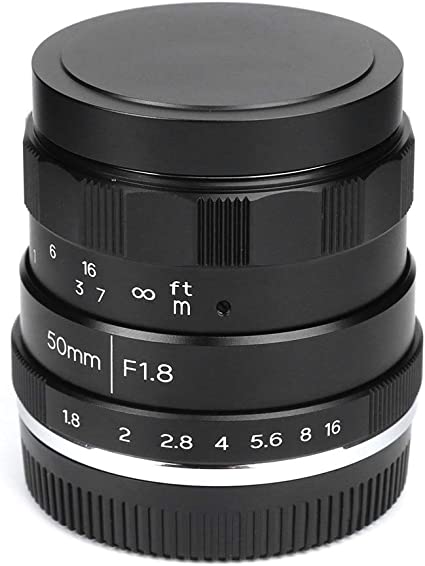
To remember this, it is useful to know that this is always approximately a doubling of the previous number alternately, so 1 becomes 2 and 1.4 becomes 2.8
For example, if you want to create a blurred background, you need a larger aperture f/2.8, the area of focus becomes smaller and your camera receives more light. You can compensate for this by setting a faster shutter speed, lowering the ISO value or using an ND filter.
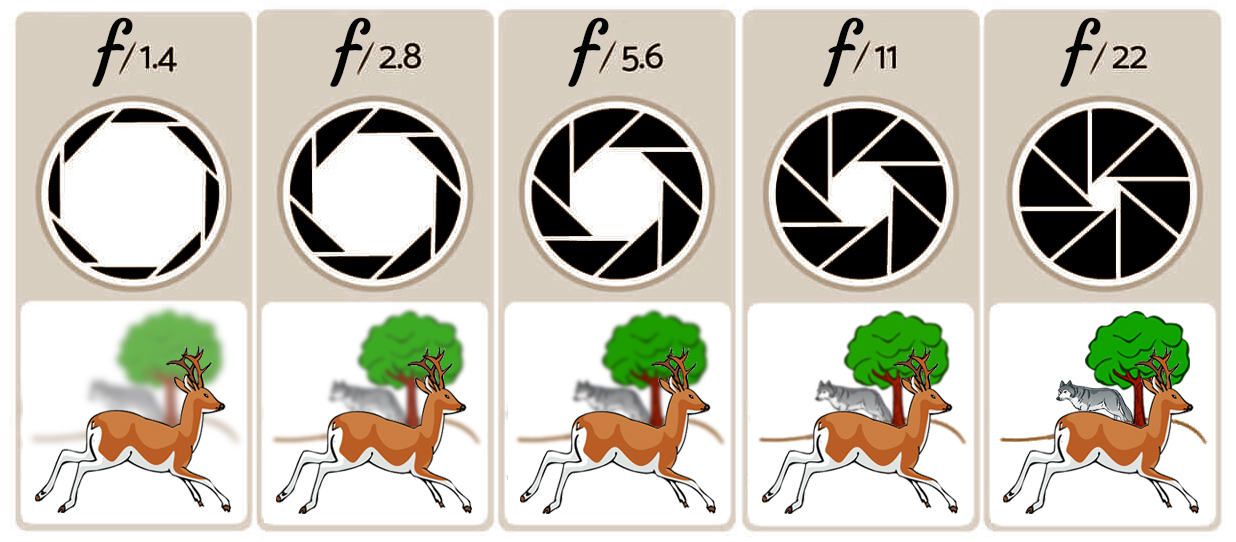
ISO values
The ISO value determines the light sensitivity of your sensor. The higher the ISO number 3200, the more light sensitive the sensor is, the lighter your photo will be and the more noise is created.
The ISO values are: 50; 100; 200; 400; 800; 1600; 3200; 6400. Also in this list, each step is 1 stop.
If your photo is too dark, but you do not want to increase your ISO value, which would cause noise, then increase the shutter speed and apply an ND filter to prevent overexposure.
The ISO values are: 50; 100; 200; 400; 800; 1600; 3200; 6400. Also in this list, each step is 1 stop.
If your photo is too dark, but you do not want to increase your ISO value, which would cause noise, then increase the shutter speed and apply an ND filter to prevent overexposure.


Shutter speeds
The shutter speed determines how long light falls on the sensor and that determines how movement is captured.
Setting the shutter speed faster ensures that you capture less light and setting it slower, for example to 15 sec. ensures that you get more light.
Setting the shutter speed faster ensures that you capture less light and setting it slower, for example to 15 sec. ensures that you get more light.
The shutter speeds are: 30 sec; 15 sec; 8 sec; 4 sec; 2 sec; 1 sec; 1/2 sec; 1/4 sec; 1/8 sec; 1/15 sec; 1/30 sec 1/60 sec; 1/125 sec; 1/250 sec; 1/500 sec; 1/1000 sec. Each step in the timeline is also 1 stop here.
A long shutter speed can cause overexposure, which can be compensated by closing the aperture, i.e. up to f/22, lowering the ISO or using ND filters.

ND filter also called gray filter
It is very important that your filter is color neutral and that it does not leave a color cast on your photo due to long exposure. Filters must guarantee a sharp image, not cause vignetting, be scratch resistant and have a reliable optical density. Kase filters have all these properties and also have a coating that repels dirt and moisture and makes them shock-resistant, making the filter almost unbreakable.
The ND filters are available in different strengths, indicated in ND and Stops. How does that work? The number of stops tells you how many times your shutter speed should be doubled.
1 stop = ND2
2 stop = ND4
3 stop = ND8
6 stop = ND64 (2 x 2 x 2 x 2 x 2 x 2 = 64)
10 stops = ND1000
1 stop = ND2
2 stop = ND4
3 stop = ND8
6 stop = ND64 (2 x 2 x 2 x 2 x 2 x 2 = 64)
10 stops = ND1000
In addition, there is another notation on the filters ND 0.9, ND1.2 and ND3.0, these numbers are based on a logarithmic scale with base 10.
This number indicates how much light is blocked
10 log(2) = 0.3 = ND0.3 = 1 stop ND
10 log(4) = 0.6 = ND0.6 = 2 stops ND
10 log(8) = 0.9 = ND0.9 = 3 stops ND
10 log(64) = 1.8 = ND1.8 = 6 stops ND
10 log(1000) = 3.0 = ND3.0 = 10 stop ND
10 log(2) = 0.3 = ND0.3 = 1 stop ND
10 log(4) = 0.6 = ND0.6 = 2 stops ND
10 log(8) = 0.9 = ND0.9 = 3 stops ND
10 log(64) = 1.8 = ND1.8 = 6 stops ND
10 log(1000) = 3.0 = ND3.0 = 10 stop ND
A 10-stop ND filter blocks 1000x the light.
What you need to remember is that you divide the number by 0.3. Then it is easy to calculate how strong the filter is. Dividing ND 0.9 by 0.3 yields 3, a 3 stop filter. Dividing an ND 3.0 by 0.3 yields 10, a 10 stop filter.
What you need to remember is that you divide the number by 0.3. Then it is easy to calculate how strong the filter is. Dividing ND 0.9 by 0.3 yields 3, a 3 stop filter. Dividing an ND 3.0 by 0.3 yields 10, a 10 stop filter.
So the light is adjusted with "stops". One stop is a halving or doubling of the light - and that is exactly what you are doing
while setting the shutter speed, aperture and ISO on your camera.
while setting the shutter speed, aperture and ISO on your camera.
The difference between aperture f/8.0 and f/2.8 is three steps, or 3 stops.
The difference between ISO100 and ISO800 is three steps; or 3 stops.
The difference in shutter speed of 1/125 second and 1/15 is also three steps, or 3 stops
Your camera receives 3 stops more light and the photo is therefore significantly overexposed, so you can compensate for this with an ND neutral density filter, which blocks out 3 stops of light.
The difference between ISO100 and ISO800 is three steps; or 3 stops.
The difference in shutter speed of 1/125 second and 1/15 is also three steps, or 3 stops
Your camera receives 3 stops more light and the photo is therefore significantly overexposed, so you can compensate for this with an ND neutral density filter, which blocks out 3 stops of light.
Below is another useful table:
In a landscape, the shutter speed is often not very important, but sometimes you still want to capture the movement of the rushing clouds or the shifting sand.
Since you cannot simply increase your shutter speed and increase your ISO value (which causes noise), you will first have to determine your aperture for the desired depth of field and you will have to use ND filters to counteract the excess light. and with your shutter speed you determine the correct exposure of your photo.
If your landscape also contains water, you have even more options to play with the movement of the water and your shutter speed.
Since you cannot simply increase your shutter speed and increase your ISO value (which causes noise), you will first have to determine your aperture for the desired depth of field and you will have to use ND filters to counteract the excess light. and with your shutter speed you determine the correct exposure of your photo.
If your landscape also contains water, you have even more options to play with the movement of the water and your shutter speed.
Before you start photographing with long shutter speeds, make sure you have a good tripod and make sure your battery is properly charged. It is also important to first take a good look around and take some photos of the surroundings, in order to determine the correct position, where it is best to stand for the best composition.
If you use long shutter speeds, you have a low light sensitivity of ISO 100 and an aperture of around f/16, then you first measure the shutter speed that you should set, for example 1/250 sec. If you now have an ND1000 filter, it blocks 10 stops of light and you end up with 4 seconds for good exposure.
We wish you lots of photography fun, because that is the most important thing.
with ND10 filter without filter
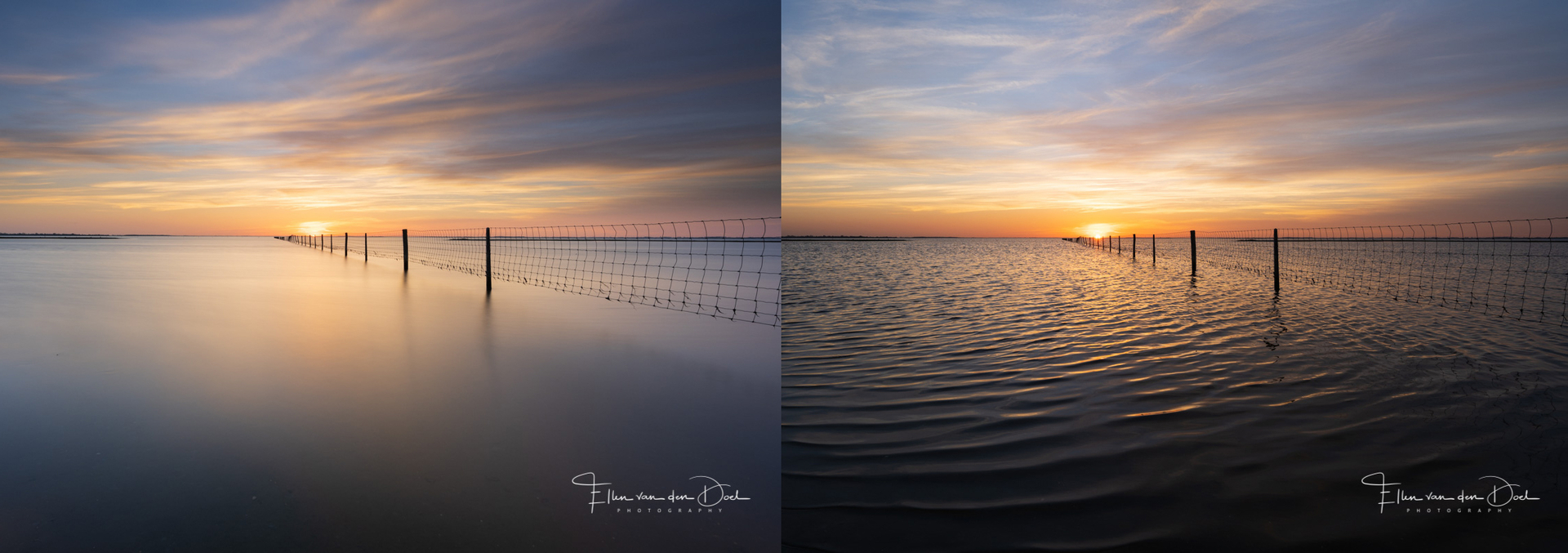

Comments (0)
No comments found.

